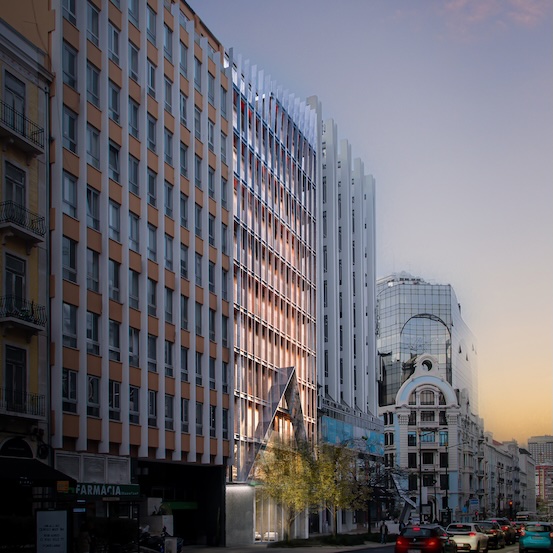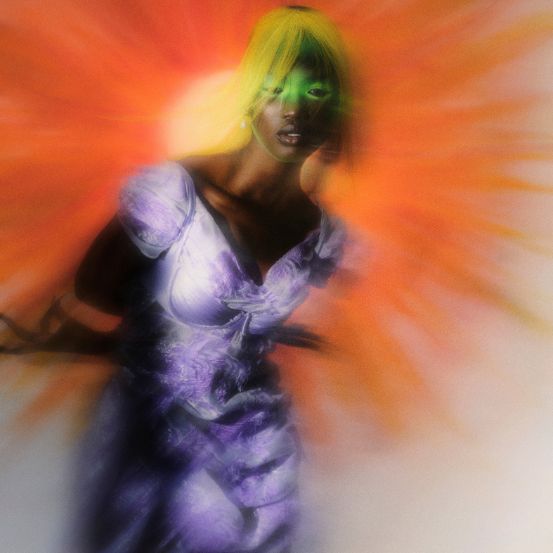Portugal with Love Issue
What if we told you that, despite all the times you've traveled to Madeira, you haven't gotten to know it at all? What if the whole island was like that shop window whose façade attracts thousands of visitors who, however, refuse to enter and explore all the treasures scattered around the shelves? Would we rethink tourism itself? Make it purely about sharing the love of a place? Maybe that's all it takes.
If you still think that Macaronesia is a distant exotic region, with white sandy beaches, caressed by turquoise waters and bordered by coconut palms swaying in the monsoon, think again. From the Greek makáron (happiness) and nésoi (islands), meaning Islands of Happiness, it is the region that encompasses the North Atlantic archipelagos close to Europe and Africa, at the mouth of the Strait of Gibraltar. The Azores, Madeira, the Canaries and Cape Verde are thus the Blessed Isles referred to by ancient geographers. If we want to complicate things, Macaronesia is the westernmost biogeographical region (or ecozone) of the Palaearctic Region, the largest ecozone. In latitudinal terms, Cape Verde, the most southerly (the Azores being the most westerly), is technically already in the tropics. But this means that the Azores, Madeira and the Canary Islands are blessed with a subtropical climate (the most attentive will find it absolutely fascinating to browse the stores of the biggest fashion chains in Funchal without being able to find clothes designed for the cold), which is all the more noticeable in its flora - the “island of flowers”, as Madeira is also known (the Flower Festival is an event that attracts thousands of visitors), and in terms of botany, belongs specifically to the Holoarctic Floristic Kingdom or the Boreal Kingdom, as Madeira is also known (the Flower Festival is an event that attracts thousands of visitors from all over the world) - and as far as botany is concerned, it belongs specifically to the Holoarctic Floristic Kingdom or Boreal Kingdom, which includes the Palaearctic Region or Palaeoarctic Kingdom. The uniqueness of the ecological conditions is such that it brings together a diversity of species and plant communities that are unique on the planet and is considered by the scientific community to be one of the most important biodiversity centers in the world. The successive episodes of ecological change resulting from recent European climatic history have not only not affected the region, but have also made Macaronesia an extreme location for biodiversity dispersal routes of biodiversity, a privilege for the survival of a large number of species and relics, some of them dating back to the Tertiary Period (up to 65 million years ago), now extinct in the Mediterranean Basin, which are still alive and well here. The four archipelagos of Macaronesia together have approximately 4,500 species of vascular plants. A fifth of these are endemic to each archipelago, but approximately 220 are shared. If we count the European archipelagos of Macaronesia alone, which have the highest degree of endemism in Europe, there are 840 endemic species. It is clear that, from the time of settlement to the present day, there have been changes in natural ecosystems that have resulted in a decrease, both quantitatively and qualitatively, in plant diversity. It is estimated that 418 vascular species (50% of the vascular plant species endemic to the Azores, Madeira and Canary Islands) are threatened with extinction. With this in mind, the Laurissilva da Madeira, the name by which the island's indigenous forest is known, which covered almost all of it when the settlers arrived, but which today is reduced to 20% of its territory (15,000 hectares), was included in the Madeira Natural Park and is now protected by regional, national and international legislation. It is now a Priority Habitat under the European Union's Habitats Directive, a Special Protection Area, has been part of the Council of Europe's Biogenetic Reserves Network since 1992 and is on Unesco's list of World Natural Heritage Sites. Since its importance was recognized and publicized, this natural sanctuary has become one of the most popular options for tourists, with all its constraints. It goes without saying that the profile of the visitor looking for this place is completely different from that of, let's say, the conventional tourist. Without wishing to enter the political field or touch on issues that also involve land use planning, perhaps Madeiran Laurissilva is an example of the urgent need to change the tourism paradigm. Those who seek out a place for what it is, and not for what it has become after tourist (over)exploitation, value it, preserve it and, above all, love it.
Mainland Portugal receives an average of twenty million tourists a year. But in this accounting, we have to distribute them across Lisbon, Porto, Coimbra, the Alto Douro Wine Region, the Costa Vicentina, the Alentejo and, of course, the Algarve. To these figures we must also add the annual return of emigrants. But Funchal alone receives almost two million visitors every year, either by air or at its cruise port. The latter welcomes tourists who have only a few hours to get to know as much as possible. There is a tendency to tailor the offer accordingly. Nothing could be further from the truth. Cruise passengers need to be pampered. With a view to their return, by plane, with more time to enjoy a full vacation and the chance to get to know the destination in depth. If you are given the impression that a sightseeing excursion is enough to get to know the whole destination, the passion dies there. And with it dies that of the locals, who see their place transformed into something they no longer recognize. Madeira is, as they say, and I'll excuse the redundancy, a world. Six hundred years of history have shaped a people according to a climate and geography completely different from those to which the mainlanders of the 15th century were accustomed. It is, therefore, a story of overcoming, of fighting against the elements, of plunging into the unknown with the courage and determination that this requires. In 1418, the exploratory mission of João Gonçalves Zarco and Tristão Vaz Teixeira reached the island of Porto Santo, where they stayed for about a year before continuing their journey. In this second phase, they were accompanied by Bartolomeu Perestrelo and, in the end, only 65 km (40 miles) away they sighted the island of Madeira, on July 1, 1419. Infante D. Henrique, the captain of this mission, would have been very happy, as he now had land for a pit stop on his way to the rest of the discoveries. Not that the islands were anything new, because in an anonymous writing from 1348, entitled Libro del Conocimiento (Book of Knowledge), the archipelago was already mentioned with the islands called Leiname, Diserta and Puerto Santo. Fortunately, these Castilians didn't start settling the islands the way we did, in 1425, by order of King João I. Then came the desire for economic exploitation of the place and the captaincies were established:In 1440 the Captaincy of Machico was given to Tristão Vaz, in 1446 the Captaincy of Porto Santo was given to Bartolomeu Perestrelo and Zarco took over the Captaincy of Funchal in 1450. Algarvians and Minhotos came and the deforestation of the Laurissilva began with a view to agricultural exploitation and the epic construction of the Levadas, an irrigation system designed to take water from areas where it was abundant (north-facing slopes) to others where it was scarce, to the south (it's curious, half a millennium ago what would today solve the problem of water scarcity in the south of mainland Portugal was done in Madeira). This made it possible to start growing wheat, as well as subsistence farming and fishing as a local way of life, and the typical export of cedar and yew wood and dragon's blood (dragon tree sap used to make carmine pigment), which, until the intensive cultivation of sugar cane (where slave labor was used for the first time), was Madeira's great economic engine, still inseparable from its more traditional side, and which is behind one of its greatest riches.
Nevertheless, sugar cane was the island's great economic driver (at the time it was considered a spice), with a noteworthy volume of exports that attracted investors and immigrants. It attracted investors and immigrants, before its production was moved to other colonies, such as Brazil and São Tomé, and was replaced by wine production in the 17th century. This activity was such that Madeira was often the target of pirate and corsair attacks, with looting so violent that the main fortifications date back to that time, and not to the beginning of settlement. But let's focus on wheat, or anafil (also known as Portuguese wheat or naked wheat), whose presence on the island is as old as man. It was the staple food of the first settlers, along with vegetables and fish, and animal protein was reserved for festive days. Infante D. Henrique gave the first order for the construction of mills, the ovens were public and their weekly baking was a real social event. There were only a few “manor houses” in the more rural areas that had them for baking bread for the family, settlers and servants.It was this latter practice that led to the spread of bolo do caco, baked in a container (the caco, a kind of clay frying pan). Madeiran bread is one of the island's main gastronomic riches today, and far beyond that “bolo-bastião” - which will be missed by tourists who invariably stick to kebabs with laurel sticks and fried corn or fried swordfish with banana and passion fruit - and its specificity is intertwined with the island's own history. Because the abandonment of cereal production (and the need to move it to higher and colder areas, a phenomenon that lasted until the 90s of the last century) due to the cultivation of sugar cane and bananas forced the inclusion of sweet potatoes in its preparation. So much so that almost all breads here, still a staple food today, have the tuber in their composition. Teresa Vivas knows all this and much more, and in 2020, in partnership with the Regional Directorate of Agriculture and the company Mesa, the Mais Madeira à Mesa (More Madeira at the Table) project was born: “The aim was to create conditions so that, increasingly, the agricultural and agri-food products of the islands of Madeira and Porto Santo would be a source of pride and occupy a privileged place on the tables of those who live there, not only for the diversity and richness of the food they contain, but above all for their powerful and undeniable gastronomic and cultural value.” From this adventure comes a book that will be published soon (but which we are authorized to publish) under the title Bread and Cider. And this is where we want to go... How many times have we visited Madeira and brought back, as a souvenir, a honey cake, a Madeira wine (semi-dry, please) and fennel sweets? Did we know that the best cider in the world is produced here? Not many people, that's for sure.
The Madeirans, revelers by nature, are affable. They have lived with tourism since the 18th century, when a wealthy aristocracy, patients who came “by air”, travelers and scientists flocked to the island, but that's not the only reason for their hospitality. It's a centuries-old spirit of mutual help, a sense of community that comes from an enormous attachment to their land, an immense pride in their history and a simplicity that can hardly be found on the mainland. I remember meeting a young man from Madeira at the time of his inspection for compulsory military service who, apart from the time he went there, had never seen the sea. It's only over the years of living and interacting with other Madeirans that I've realized that this doesn't have to do with the isolation that the countless roads built in recent years could have removed. It has to do with the sense of belonging to a place. It's this uniqueness that we talk about when we talk about Madeira. It's a culture so diverse that you fall in love with it. The Flower Festival is beautiful, but more beautiful is Christmas, which begins on December 15th with the (sung) Masses of Childbirth at 6am, where literally everyone goes, tastes the broinhas (each house has its own recipe) and the liqueurs, and finishes it all off with a meat sandwich from the vineyard and a glass of hot or soft cocoa, the sugar cane brandy softened with bee honey (not molasses or sugar cane honey). This expression of its very own culture is a mere example of how much Madeira hides from the less attentive. These are the ones who try the espetada but don't even know that there's the Picado de Polvo or the Mendinha. The ones who are dying for a poncha but have never tried Cortadinho (barley coffee with lemon and Madeira wine), Pé de Cabra or Nikita. Those who buy a bottle of Madeira wine to take back to the mainland but don't know they're about to leave the island where the only European rum and a wonderful cider are produced. Funchal, cosmopolitan and modern, full of good restaurants and leisure activities, is beautiful. But what about all the fajãs where you can't be reached? Chão da Ribeira, the volcano whose last eruption formed Seixal? Paul do Mar, a fishing village that is the last stronghold of island life from other times? The ruins of Calhau de São Jorge, one of the first ports built on the island and where you can still see the life of yesteryear?
Let's do an off-the-beaten-track test to see how well we know Madeira, pointing out that not even Madeirans know many of these places. Save it for a future visit to the island. To the west, Ponta do Sol, the Anjos Waterfall (beware of the danger of landslides), Madalena do Mar, Calheta Beach (to demystify the lack of white sand beaches on the island) and Paul do Mar Beach (a dip off the pier is a must), because the Ponta do Pargo Lighthouse, the Achadas da Cruz Cable Car and Porto Moniz are in the “conventional” guides, as is watching the sunset from the Ponta do Ladeira Viewpoint. In the center and north (where it's advisable to stay because it's easier to get to all parts of the island without having to travel far), the must-sees are the Encumeada viewpoint, Paul da Serra (note that the road through Encumeada is currently closed and you have to go through the Calheta strait), Fanal, Ribeira da Janela, Véu da Noiva, Seixal and its natural pools (be careful, don't get too close to the sea), Chão da Ribeira, São Vicente, Fajã da Areia and, of course, Curral das Freiras and its Bocas, Namorados at 900m and Socorridos at 1. 200m. On the eastern side of the island, must-sees include Cabo Girão, Garajau, Prainha do Caniçal, Santana, Queimadas, Porto da Cruz and the Guindaste viewpoint. Set aside a whole day for Eira do Serrado (be aware that the road from the threshing floor that goes directly to Pico do Areeiro is too steep, so it's best to go around Camacha, Poiso and Ribeiro Frio, with access to Levada dos Balcões). When it comes to restaurants, the list is too long to even attempt. But there's no getting around the island's latest Michelin Star, awarded to Restaurante Desarma. Unlike the other starred restaurants, all of which are worthy of honorable mention, this is the first to be entirely Madeiran, from the hotel group that owns it to the chef, the products he uses and the type of cuisine he practices, drawing on island tradition to take Madeiran gastronomy to another level. From the top of the Views Baía hotel, chef Octávio Freitas prepares tasting menus where the island's delicacies are given a new lease of life, presented in a bold way and accompanied by products made in the restaurant itself, from sea sausages to the maturing and drying of fish, including, of course, the unique Madeiran bread made with local flours. Would it take 365 days of vacation to experience all this? Possibly! It's a question of proposing a gap year to your employer. The worst that can happen is a resounding no. Never sin by not trying.
Translated from the original in Vogue Portugal's "Portugal With Love" Issue, published June 2024. Full stories and credits in the print issue.
Most popular
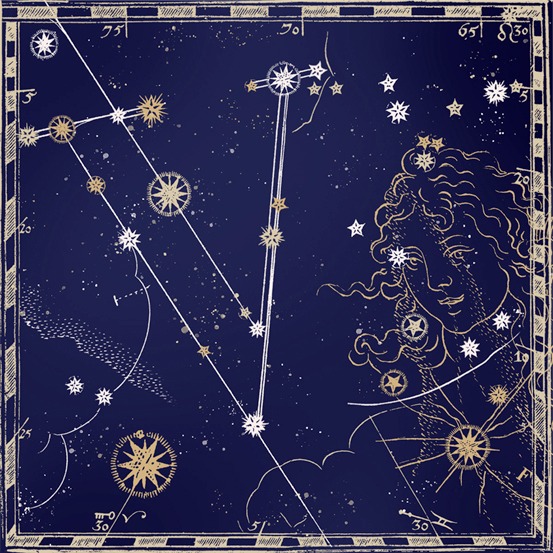
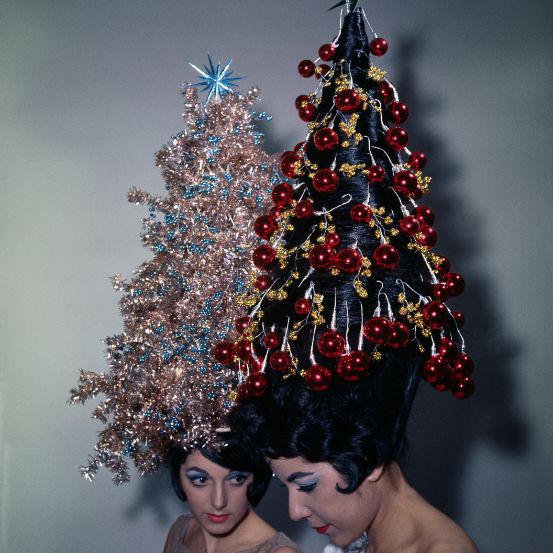


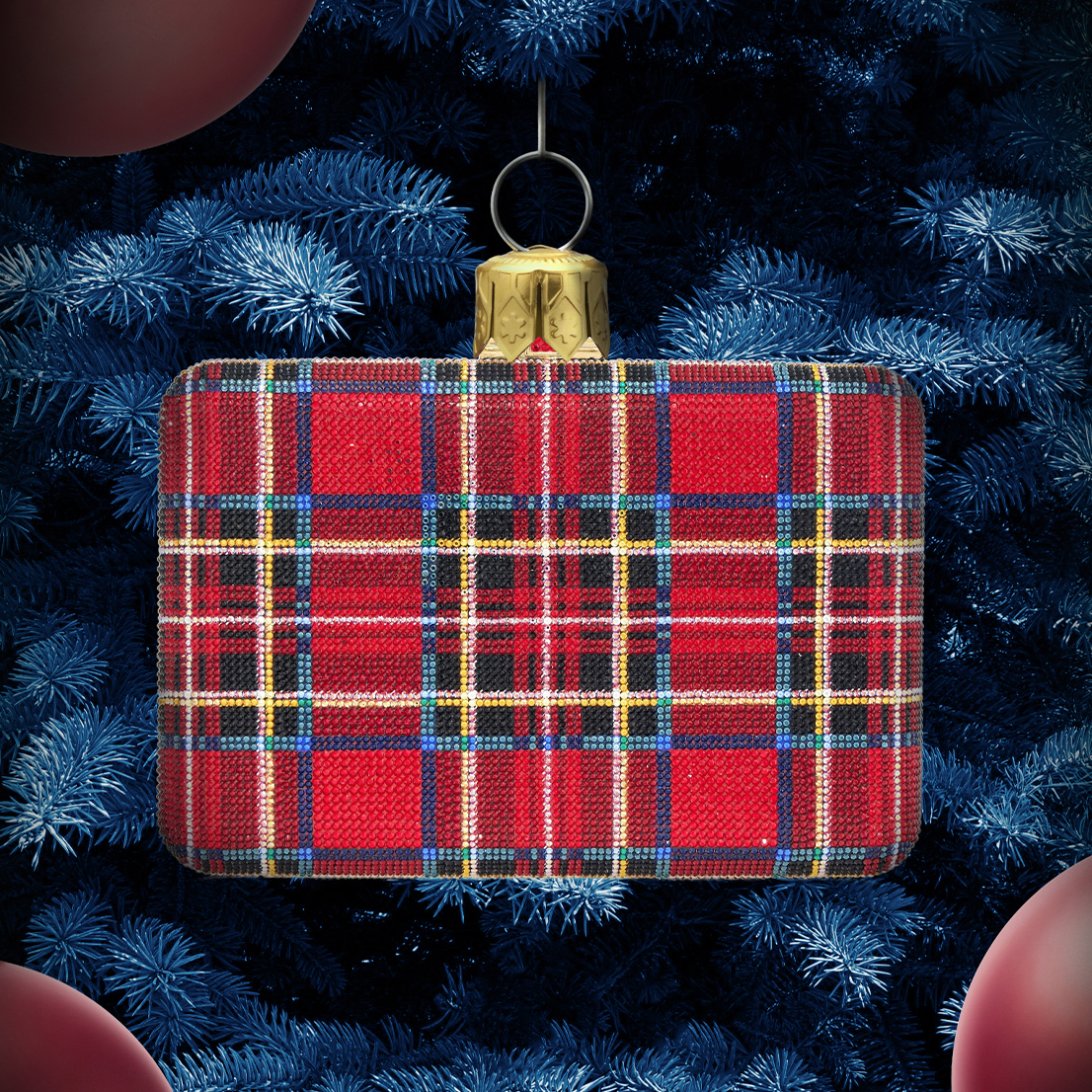
 (15).png)

